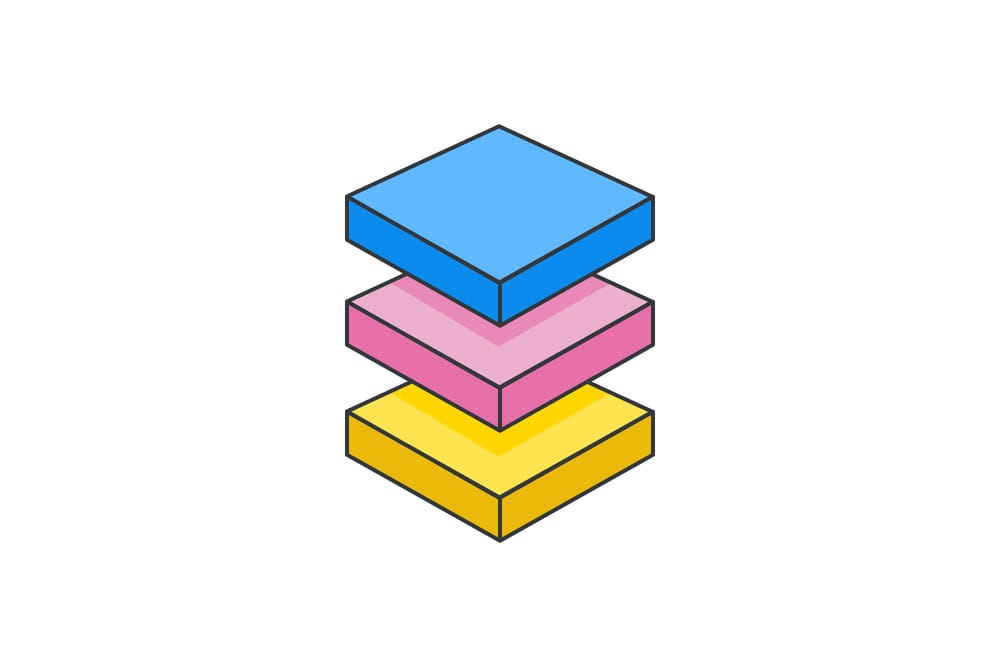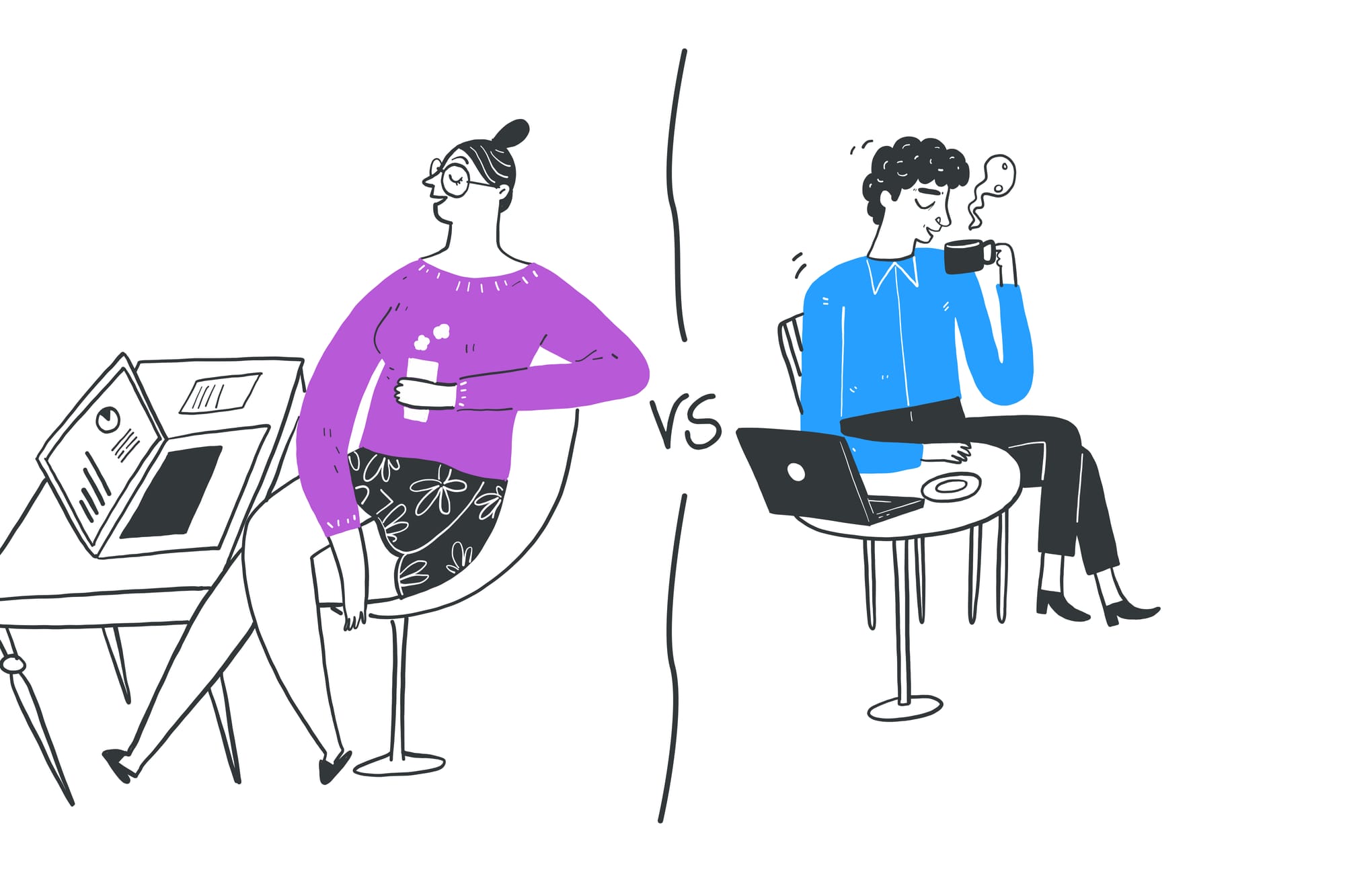What is a Tech Stack?
Definition and Components
A tech stack is a set of all the technologies used to build an end-to-end web app, mobile application, or IoT application, including programming languages, frameworks, libraries, databases, and development tools.
It determines the type of applications your development team can build, the level of customizations you can perform, and the resources you need to develop your application.
Most technology stacks are a combination of frontend and backend technologies like JavaScript, Python, MongoDB, and Apache.
Tech Stack Layers
Frontend (Client-side)
- The frontend tech stack consists of user interface, programming languages, frameworks, and runtime environment.
- It includes technologies like HTML (Hypertext Markup Language), CSS, JavaScript, and UI frameworks and libraries.
Backend (Server-side)
The backend tech stack consists of many components, including the database, server, framework, and operating system. Data storage is a crucial part of the backend tech stack, playing a vital role in efficient information retrieval, updating, and querying within databases.
You have to choose the server-side frameworks and tools carefully, considering factors like scalability, performance, and security.
Full Stack Tech Stack
A full stack tech stack consists of both frontend and backend technologies, such as Angular for the UI, a framework like Django for the application logic, and a database like MongoDB for managing data.
A crucial component of a full stack tech stack is the database management system, which handles the storage, retrieval, and management of data. Popular database management systems include MySQL and SQL Server, often used in LAMP and .NET stacks.
Tech Stack Components
Programming Languages
Programming languages play a crucial role in selecting the right tech stack for a project, as they take care of the important business logic that your applications need, with popular programming languages including JavaScript, TypeScript, Java, Python, Ruby, Scala, PHP, and C#.
Frameworks
Frameworks provide a structure to the application and have common utilities, with popular web frameworks including Express, Spring, Django, Laravel, Rails, and .NET. Selecting the appropriate tech stack is crucial for successful web development projects.
Runtime Environment
- The runtime environment is the software in which an application is run, providing cross-platform compatibility.
Servers
- A web server takes in requests (http) from the client (for example, browser), passes it on to the database for the requested information, and handles the response.
Databases
- Databases are an integral part of a tech stack, with popular databases including MongoDB and MySQL.
Operating Systems
The operating system is the foundation of the tech stack, supporting different platforms and environments, including desktop and mobile applications, web platforms, and both server-side and client-side applications.
Benefits of Choosing the Right Technology Stack
Advantages of a Well-Chosen Tech Stack
- Choosing the best tech stacks could be challenging. A proper technology stack helps build an application that can be used by a large number of people, speeds up the development process, and makes it easier for developers to communicate about the functioning of the application.
How to Choose the Best Tech Stack for Your Project
Purpose and Functionality
The purpose of the application determines what the solutions stack should look like, with factors including the type of data being stored, the number of users, and the level of interactivity.
Design and User Experience
- A good user experience is the key to attracting more traffic, with factors including the choice of tools for the user interface and server-side rendering.
Time to Production and Cost
- The goal is to put the application live as early as possible, with factors including the choice of technologies that provide utilities and solutions for common use cases and functionalities.
- The cost of the technology stack includes deployment and maintenance costs, with factors including the choice of cloud technologies and the level of complexity.
Scalability and Security
- Scalability is difficult to achieve, with factors including the choice of database system and the design of the framework.
- Security is a critical factor, with factors including the choice of technologies that follow a set of best practices to ensure maximum security of data and transactions.
Team Expertise and Maintenance
- Determine whether or not your team will be able to maintain the application once it is deployed.
- Consider your team’s experience and expertise when choosing a tech stack.
Evaluating Tech Stacks
Research and Comparison
- Research different tech stacks and compare their features, advantages, and disadvantages. Choosing the wrong tech stacks could hinder the development process. Popular tech stacks often include combinations like the MEAN stack (MongoDB, Express.js, Angular, Node.js) for JavaScript-based applications or the LAMP stack (Linux, Apache, MySQL, PHP) for robust server-side solutions, each catering to different project needs and developer expertise.
Seeking Expert Advice
- Seek advice from experts in the field to get a better understanding of technology stacks and their implications. Most modern tech stacks emphasize modularity, scalability, and ease of integration with other systems, ensuring that your application can grow and adapt to evolving technological demands.
Conclusion
Summary of Key Takeaways
Software development is a complex, creative, and dynamic process, and choosing the right technology infrastructure is crucial for the success of your project. Whether you are working with full stack developers to build web applications or integrating with other systems for business intelligence, the right tech stack makes all the difference. Consider the purpose, functionality, design, time to production, cost, scalability, security, and team expertise when choosing a tech stack.
Research and compare different popular tech stacks and common tech stacks, and seek expert advice to make an informed decision. The right choice will ensure that your application not only meets its initial requirements but can also evolve and scale to meet future demands, creating interactive web pages and robust backend systems that drive business success.Research and compare different tech stacks, and seek expert advice to make an informed decision.





